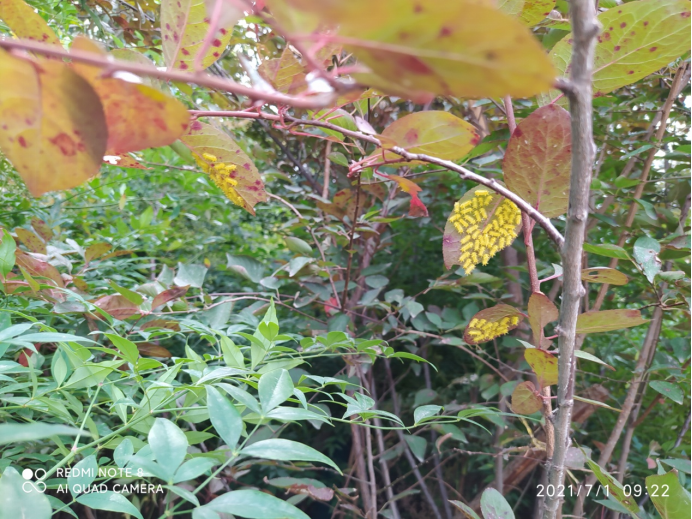Beauty plum is an important flowering and leaf-viewing tree species in the garden, in early spring, the flowers are open first, gorgeous and dazzling, you can also watch the branches and leaves, the branches are red all year round, the leaf color is bright red, can be planted alone, sliced or planted with green foliage plants in the courtyard or garden roadside.
In the conservation of beauty plum, the thorn moth is a common leaf-eating pest, and its larvae often cluster on the leaves to "eat together", nibbling the leaves into many holes, missing or leaving only the petioles and main veins, which seriously affects the tree potential.
【1】Identification of morphological characteristics of yellow thorn moth:
1. Adult: yellow head and thorax, yellow-brown abdomen, yellowish-brown inner half of the forewing, brown outer half, two dark brown transverse lines extend obliquely backward from the same point of the wing tip, and there is a dark brown round spot at the base of the posterior margin and on the transverse vein.
2, larvae: the body of the mature larvae is about 25 mm long, the body is more hypertrophied and rectangular, yellow-green, the back has 1 front and back wide, the middle is narrow purple-brown spots, each body segment has 4 branches, there are 6 above the chest, there are 2 large branches on the tail, the gastropod degeneration, the chest foot is extremely small.
【2】Occurrence and harm of yellow thorn moth in gardens:
Yellow thorn moth larvae are often infested between summer and autumn, with larvae eating leaves, the first larvae eating leaf flesh, the affected leaves into a network, the larvae grow up to eat the leaves into a lack of moments, and in severe cases, eat into light rods, resulting in secondary germination in autumn, affecting the growth and development of tree potential.
In addition to harming the beauty plum, the affected plants also include pears, apples, apricots, begonias, peaches and other fruit trees, as well as maple poplar, poplar, elm, sycamore, black oak, bauhinia and locust trees.
[3] How to kill the beauty plum when the yellow thorn moth is harmed?
When the larval swarm is found to be infested, remove the leaves, eliminate the larvae, and use the Kirin Royal Moth Spray to kill the larvae!
